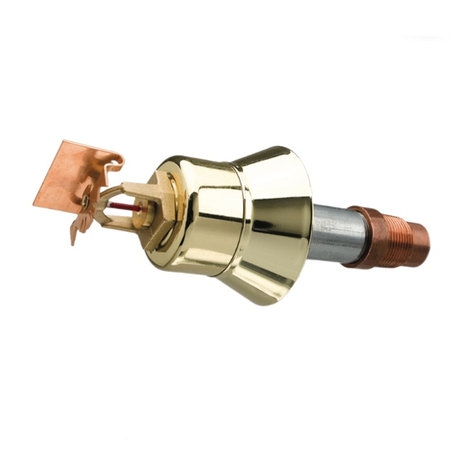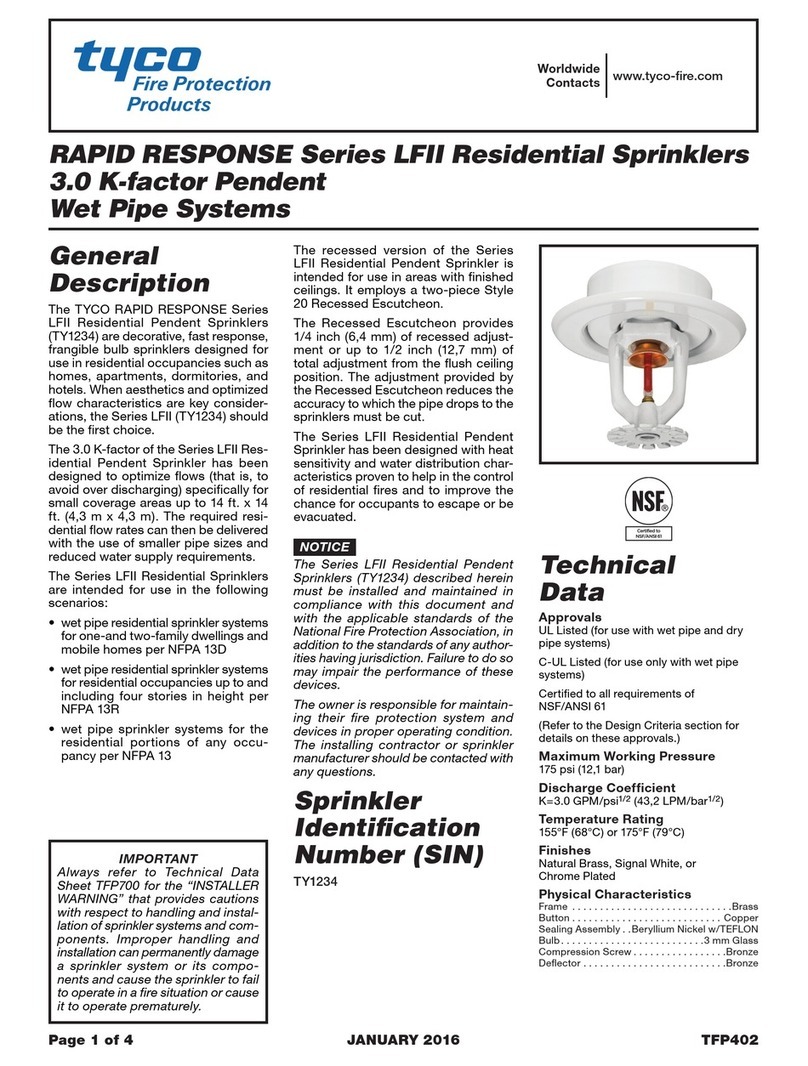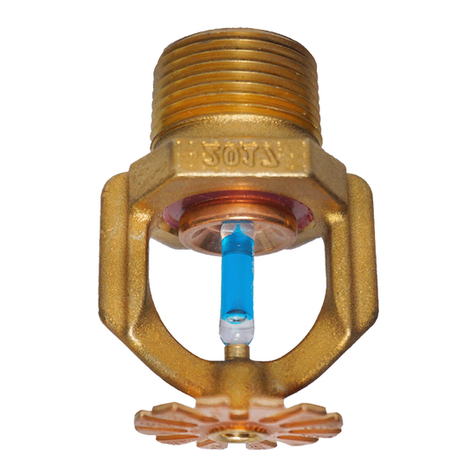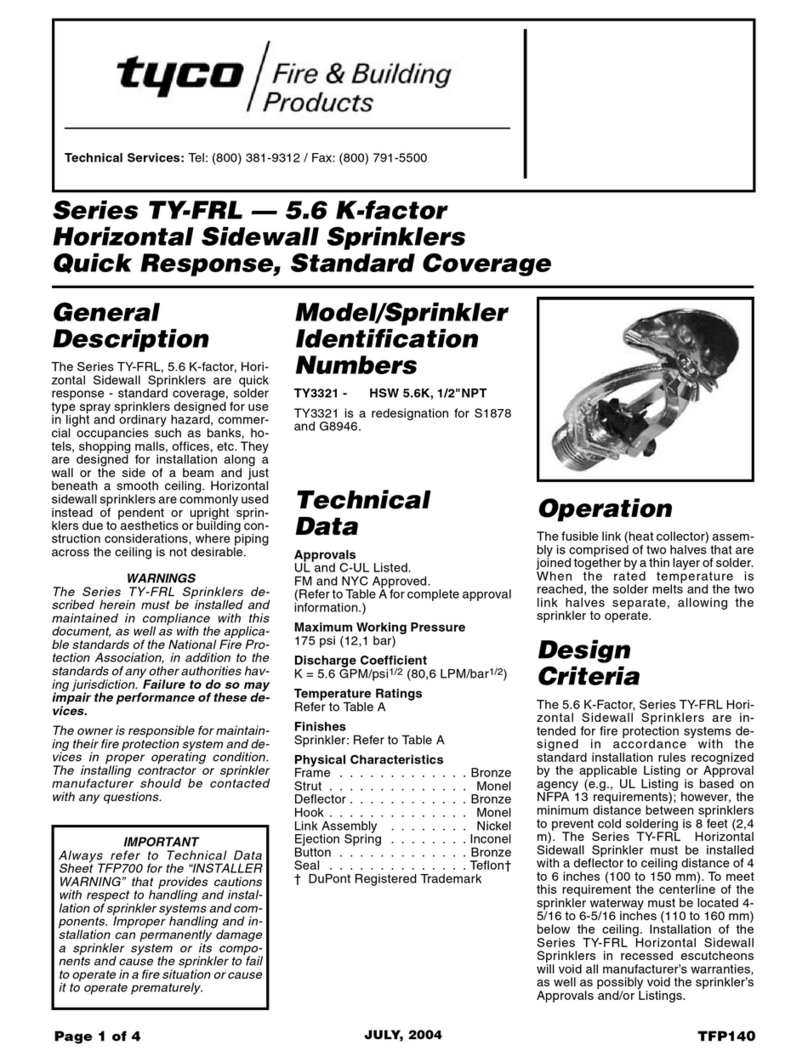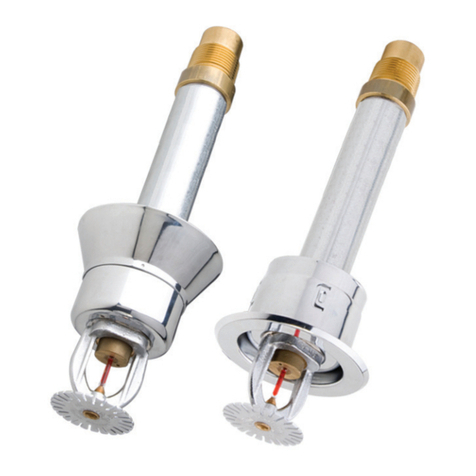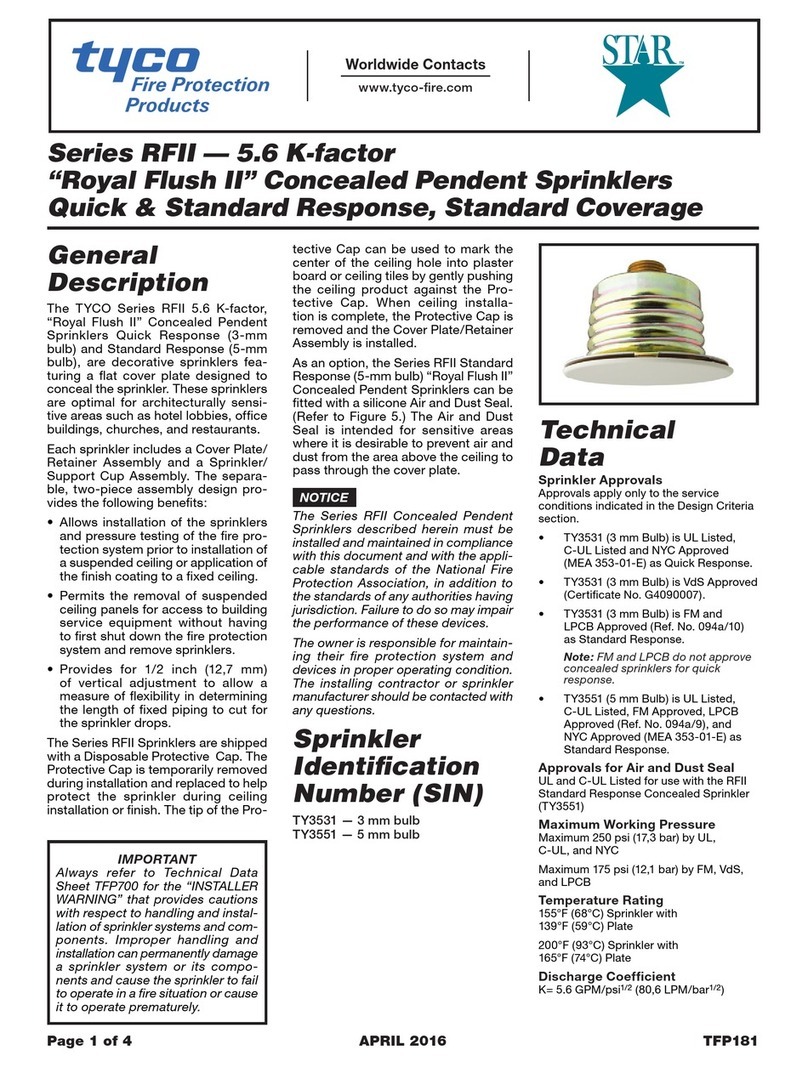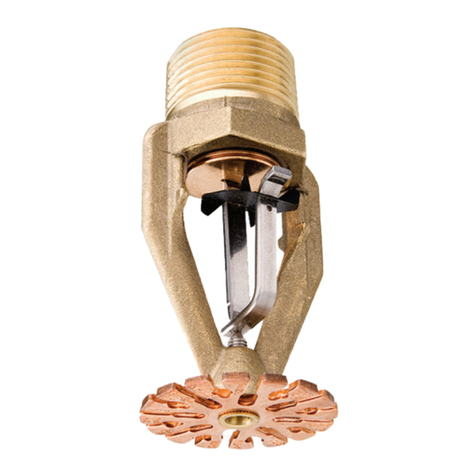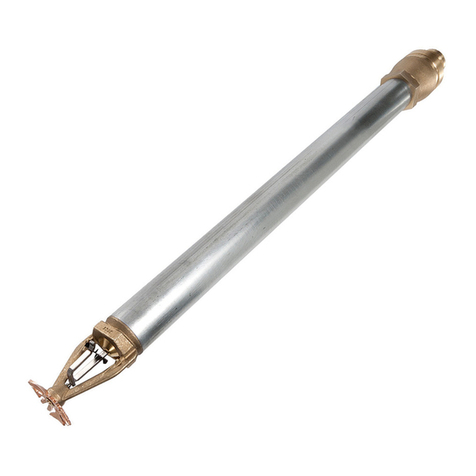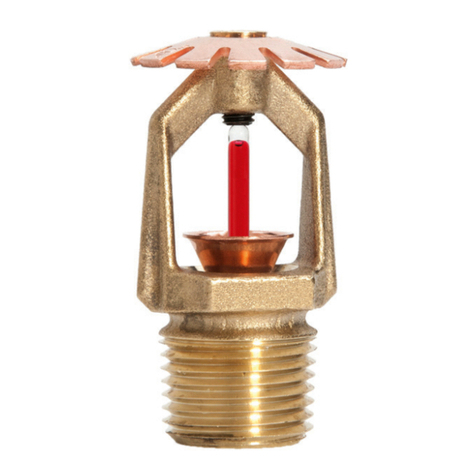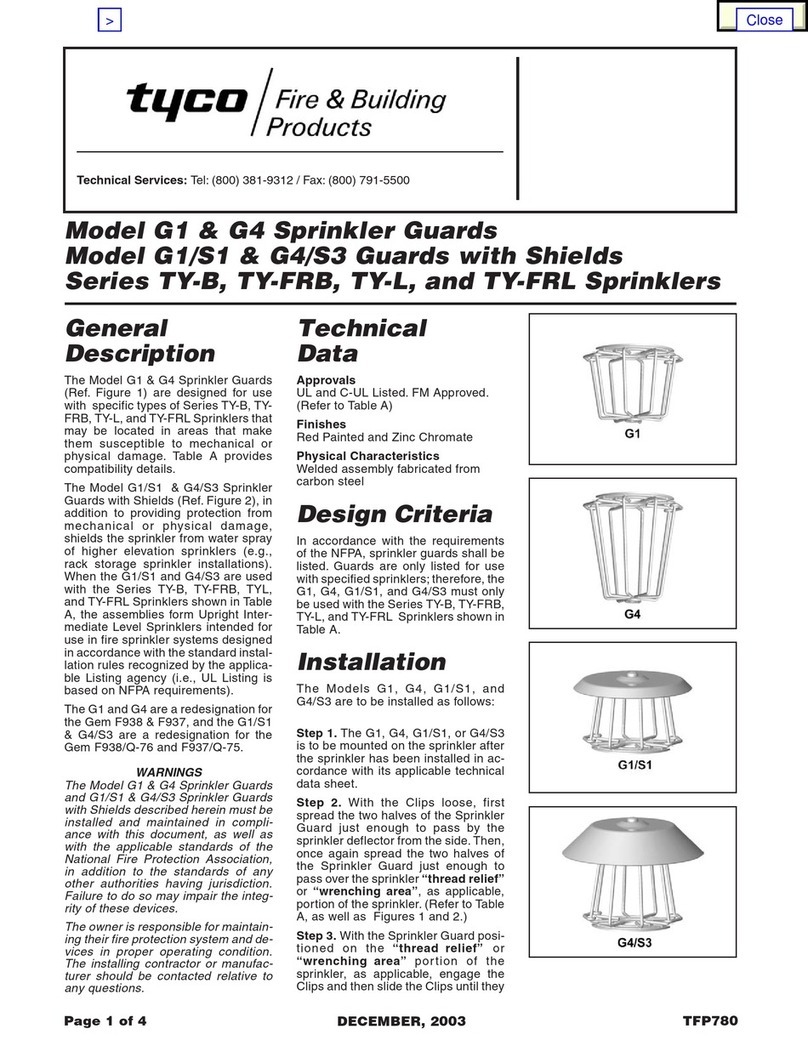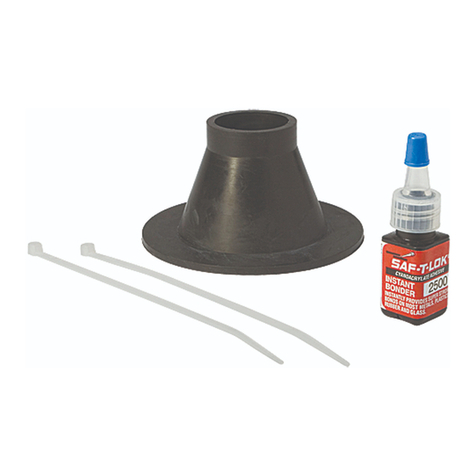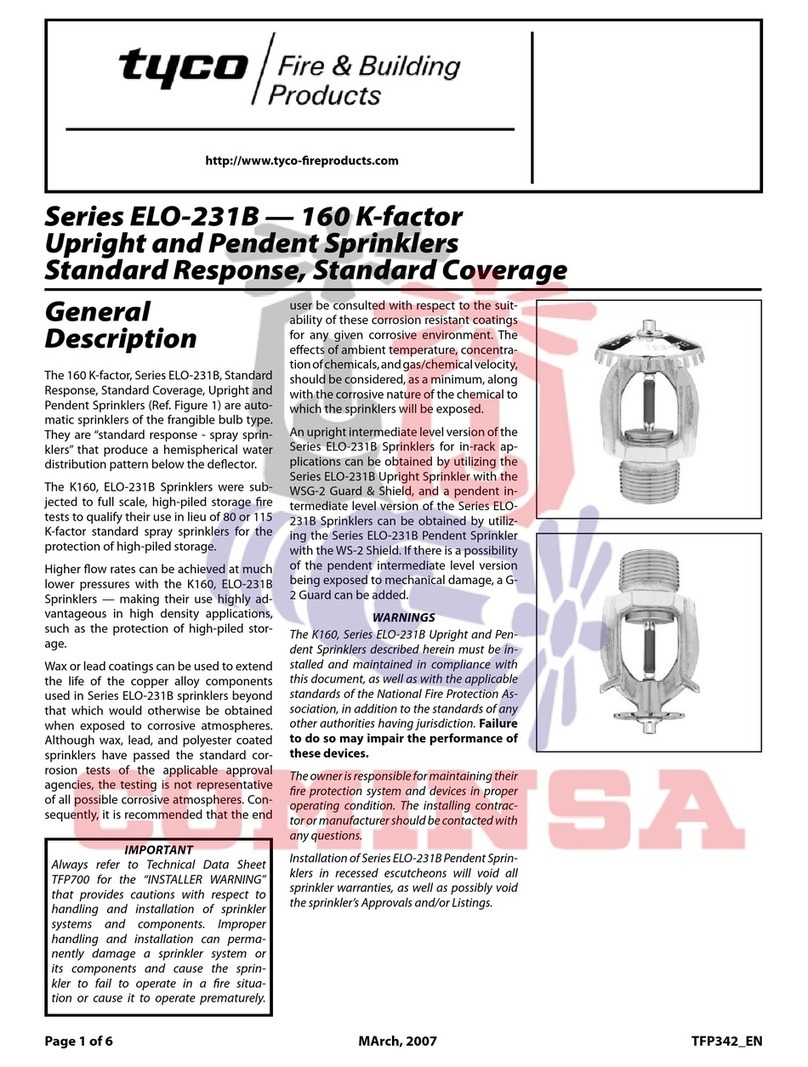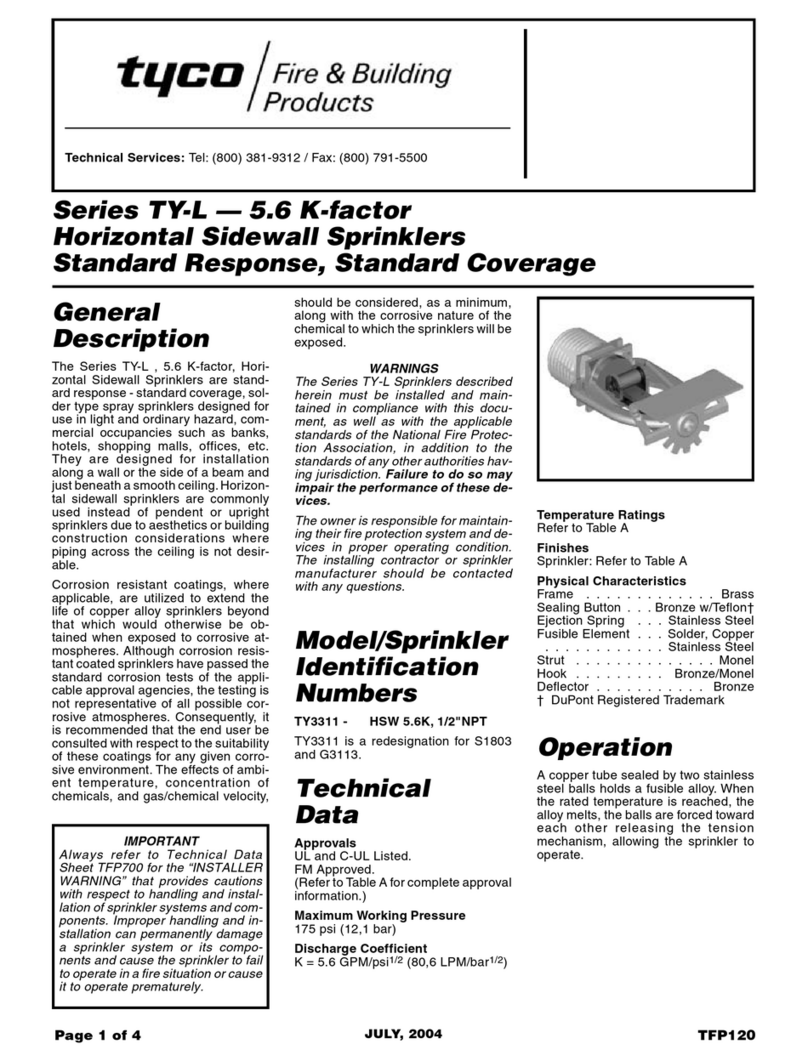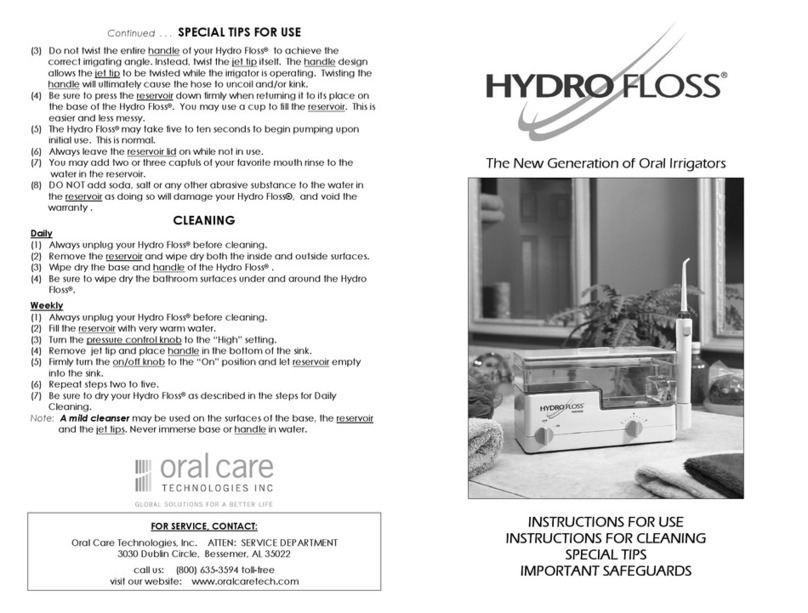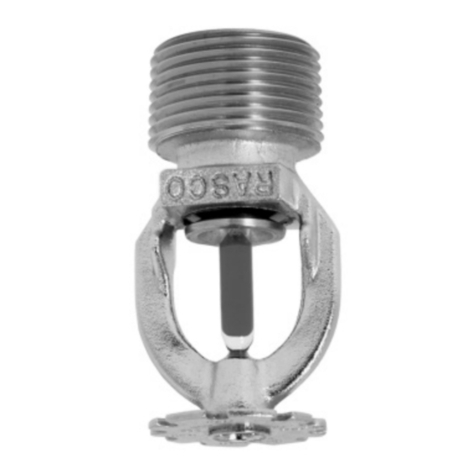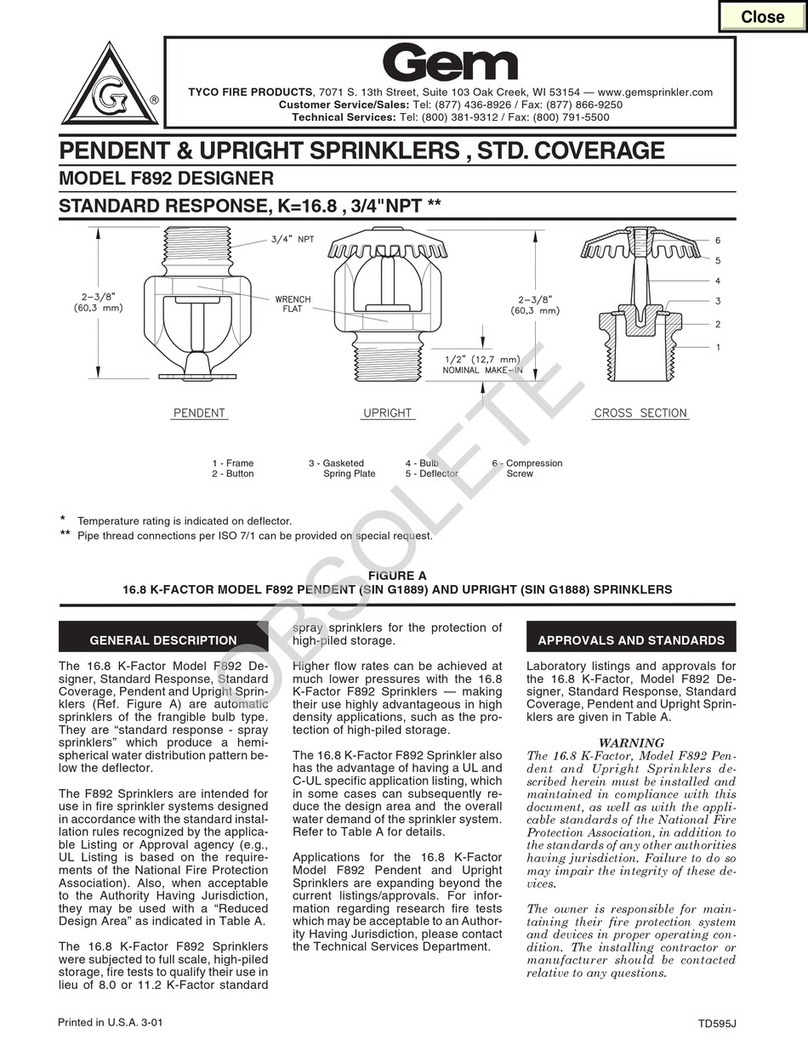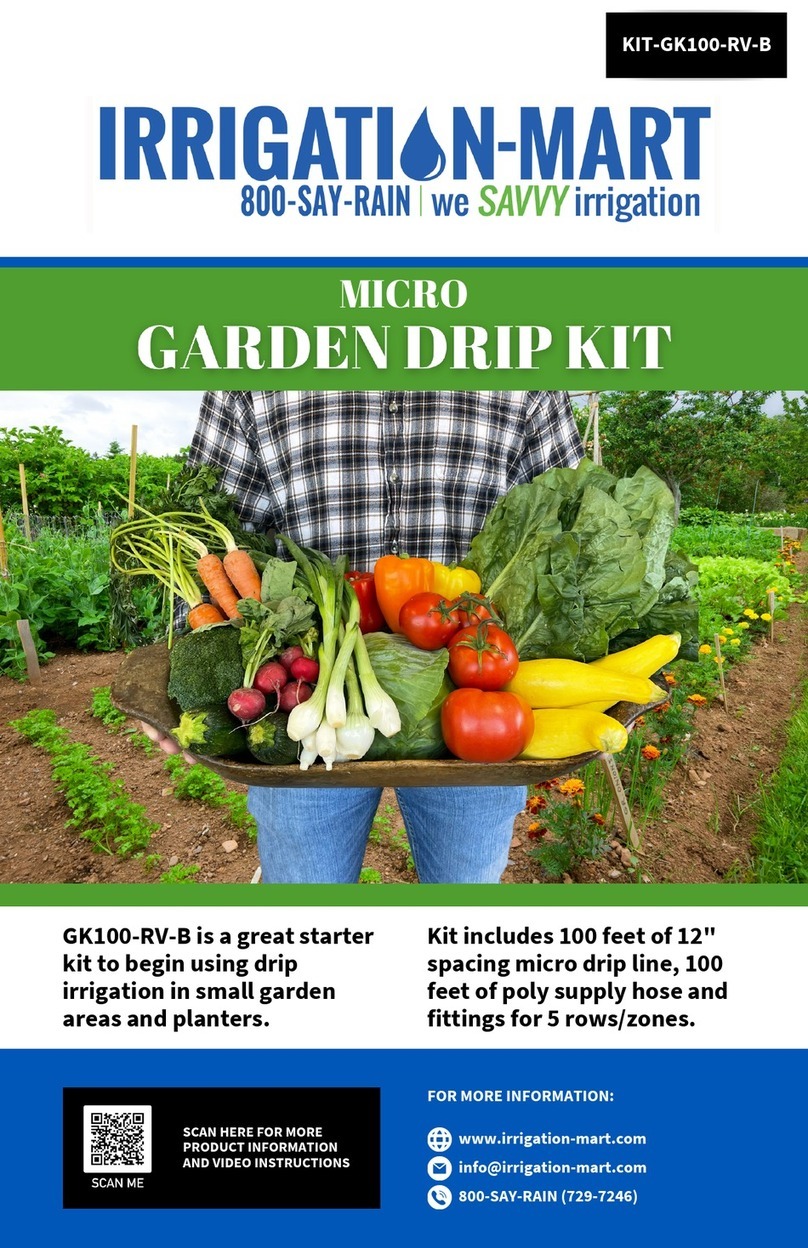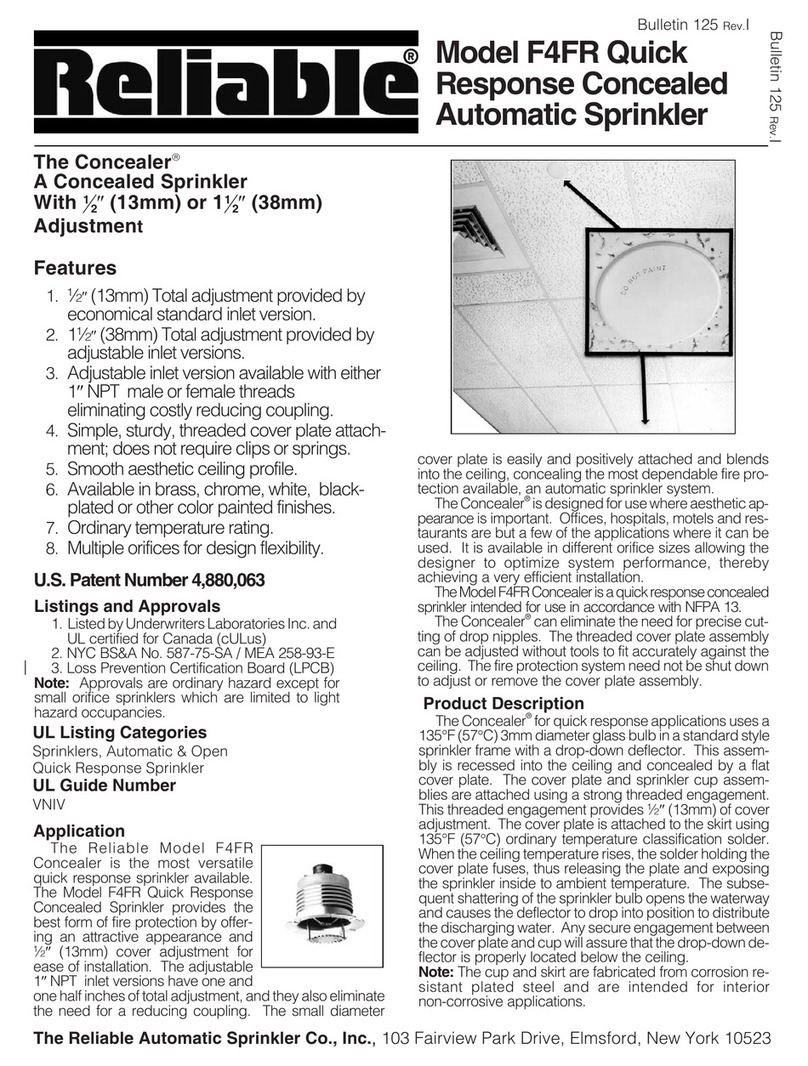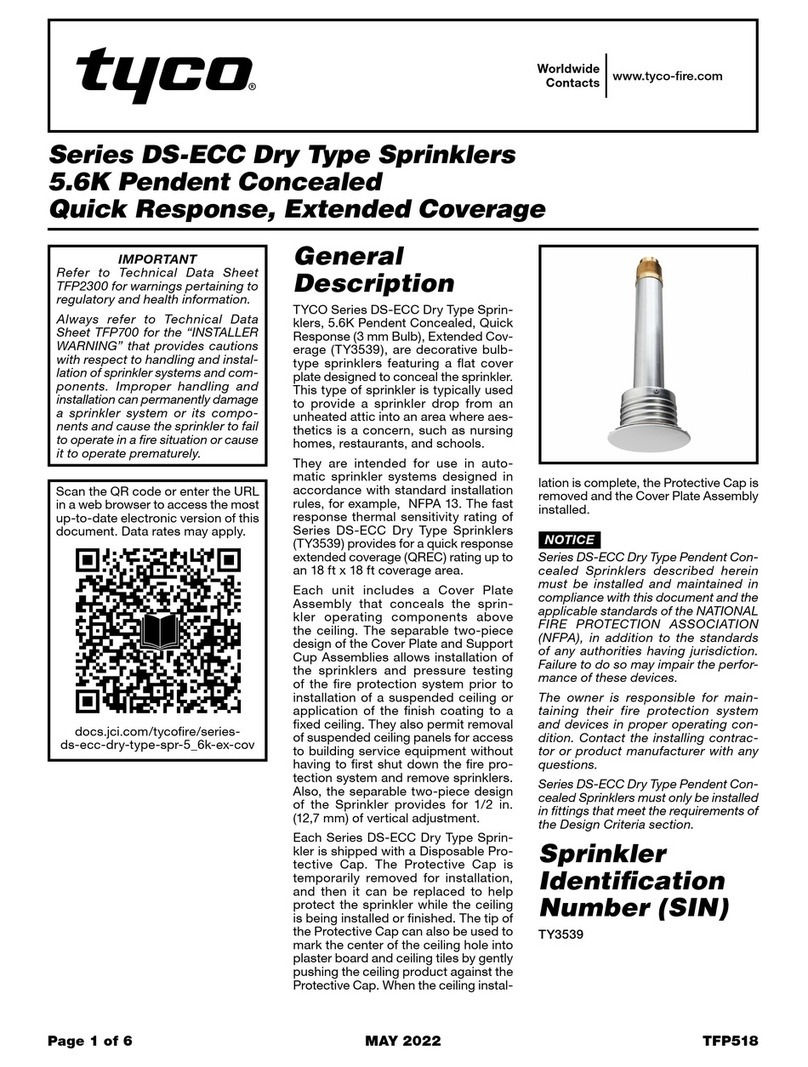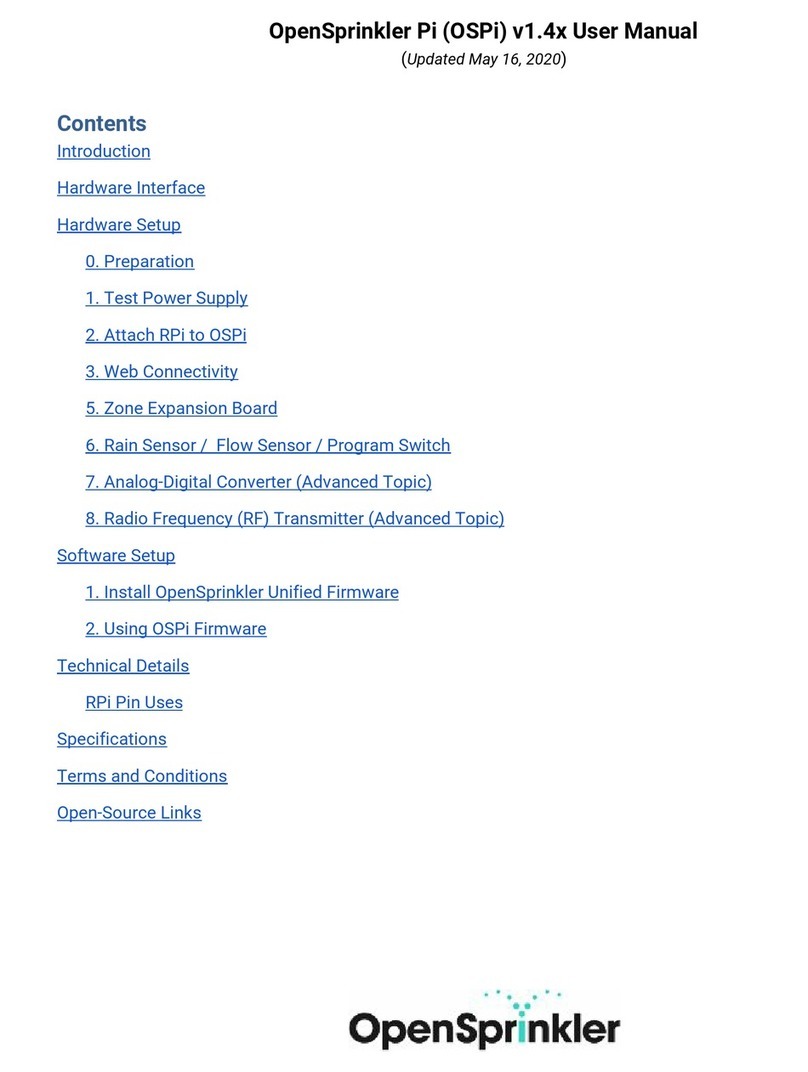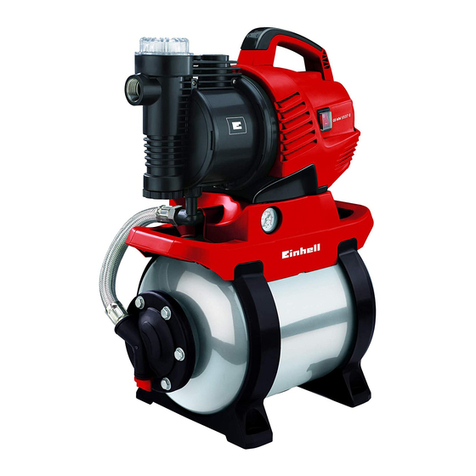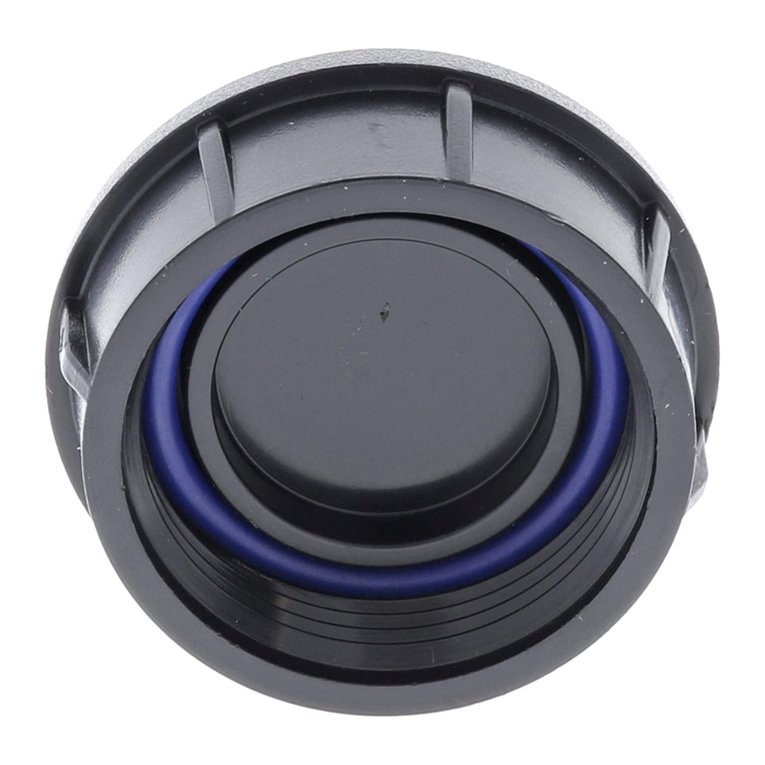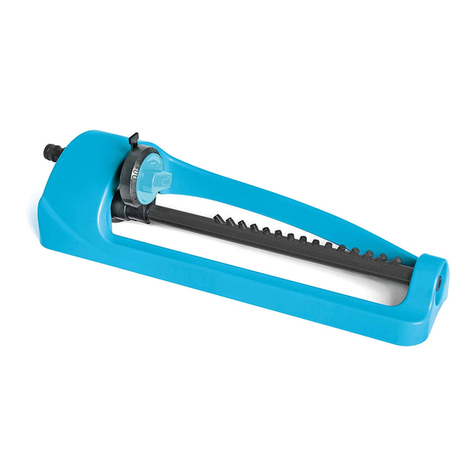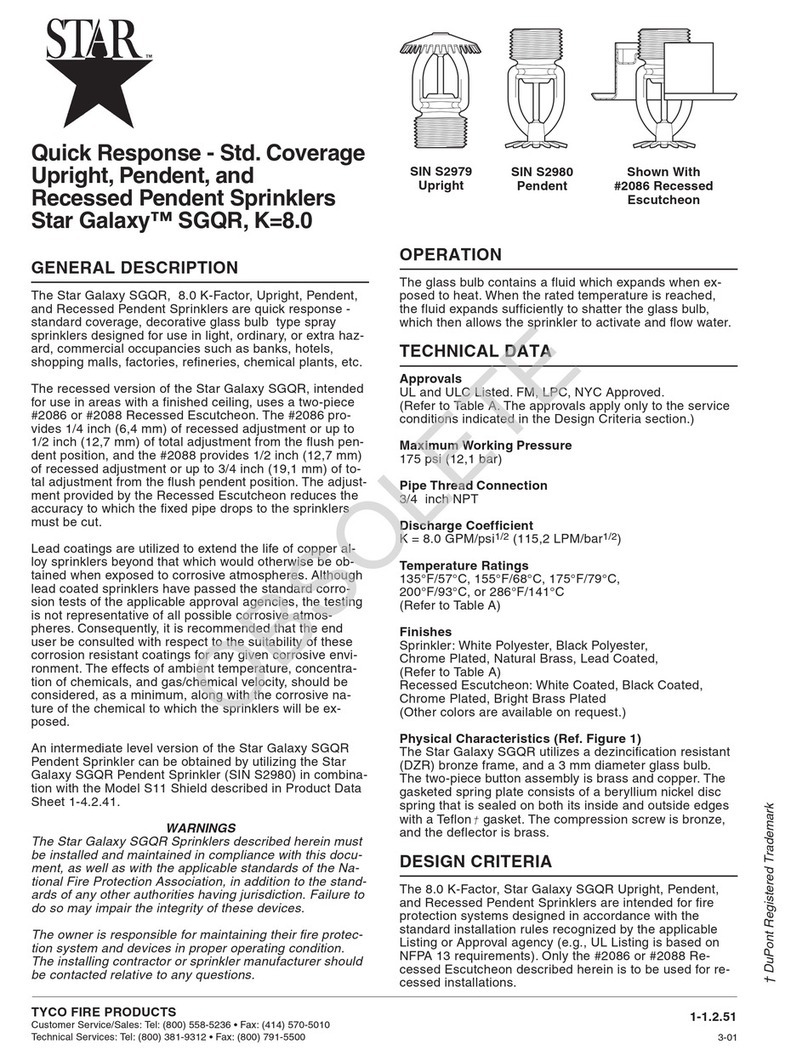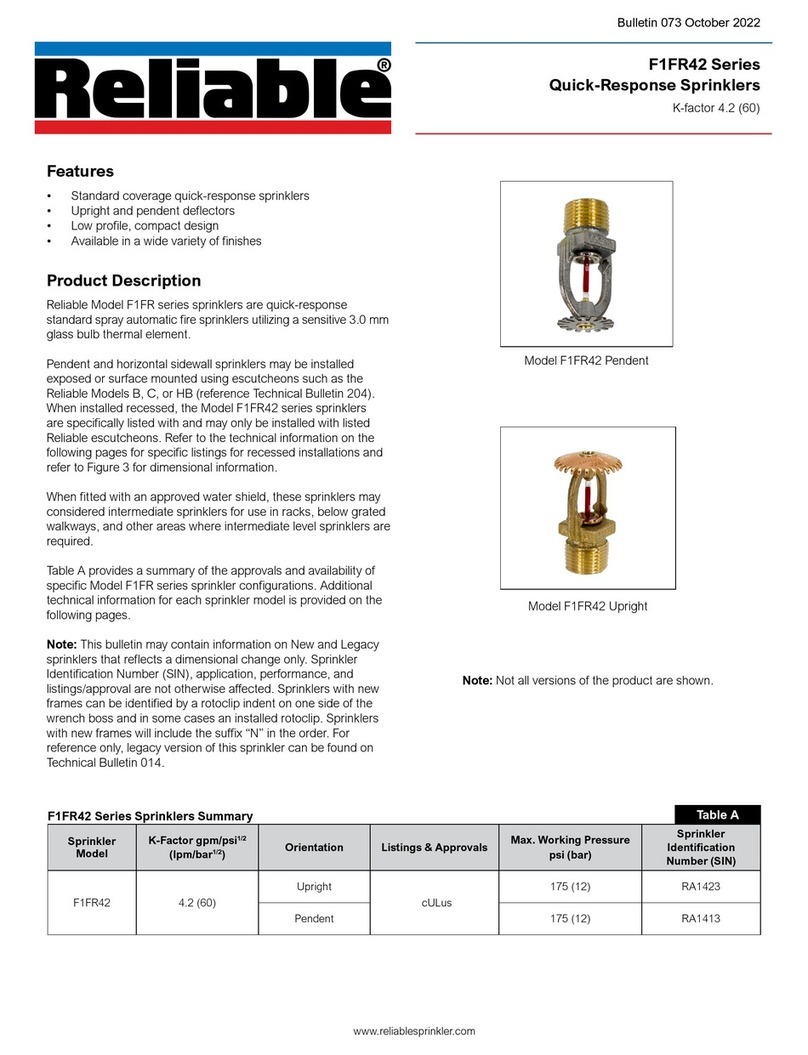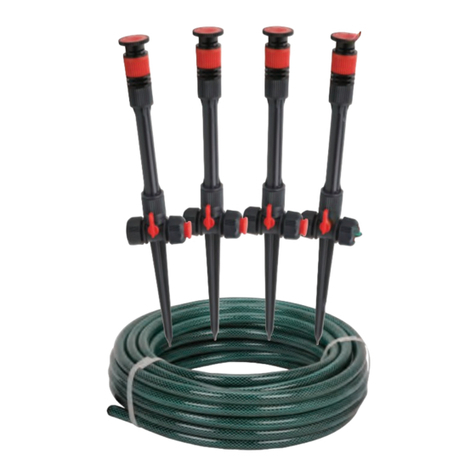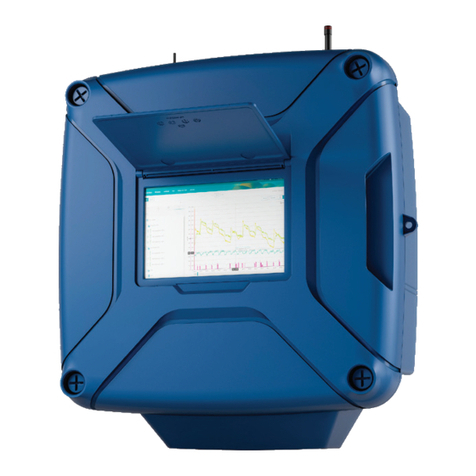
Installation
Series EC-11 and EC-14 Sprinklers
must be installed in accordance with
the following instructions.
NOTICE
Do not install any bulb-type sprinkler if
the bulb is cracked or there is a loss of
liquid from the bulb. With the sprinkler
held horizontally, a small air bubble
should be present. The diameter of the
air bubble is approximately 1/16 inch
(1,6 mm) for the 135°F (57°C) to 3/32
inch (2,4 mm) for the 286°F (141°C)
temperature ratings.
Obtain a 3/4 inch NPT sprinkler joint
by applying a minimum-to-maximum
torque of 10 to 20 ft.-lbs. (13,4 to 26,8
Nm). Higher levels of torque may distort
the sprinkler inlet with consequent
leakage or impairment of the sprinkler.
Do not attempt to compensate
for insufficient adjustment in an
Escutcheon Plate by under or over-
tightening the Sprinkler. Re-adjust the
position of the sprinkler fitting to suit.
1.
Install the sprinkler with the
deector parallel to the mounting
surface. Install pendent sprinklers in
the pendent position; install upright
sprinklers in the upright position.
2.
After installing the Style 30, 40, or
60 mounting plate (or other appli-
cable escutcheon) over the sprinkler
pipe threads and with pipe-thread
sealant applied to the pipe threads,
hand-tighten the sprinkler into the
sprinkler tting.
3.
For upright or pendent sprinklers
wrench-tighten using only the
W-Type 3 (End A) Sprinkler Wrench.
For the pendent sprinkler installed
with Style 30, 40, or 60 Escutcheon,
wrench-tighten the sprinkler using
only the W-Type 22 Sprinkler
Wrench.
Apply the wrench recess of the
applicable sprinkler wrench (Figure
5 and 6) to the sprinkler wrench ats
(Figure 1).
Care and
Maintenance
TYCO Series EC-11 and EC-14
Sprinklers must be maintained and
serviced in accordance with the
following instructions.
NOTICE
Before closing a fire protection system
main control valve for maintenance
work on the fire protection system
that it controls, obtain permission to
shut down the affected fire protection
systems from the proper authorities
and notify all personnel who may be
affected by this action.
Exercise care to avoid damage to
sprinklers before, during, and after
installation. Never paint, plate, coat,
or otherwise alter automatic sprinklers
after they leave the factory.
Replace sprinklers that:
• were modied or over-heated.
• were damaged by dropping,
striking, wrench twisting, wrench
slippage, or the like.
• are leaking or exhibiting visible
signs of corrosion.
• were exposed to corrosive prod-
ucts of combustion but have not
operated, if you cannot easily
remove combustion by-products
with a cloth.
• have a cracked Bulb or have lost
liquid from the Bulb. Refer to the
Installation section in this data
sheet.
Frequent visual inspections are recom-
mended to be initially performed for
corrosion resistant coated sprin-
klers, after the installation has been
completed, to verify the integrity of the
corrosion resistant coating. Thereafter,
annual inspections per NFPA 25 should
sufce; however, instead of inspecting
from the oor level, a random sampling
of close-up visual inspections should
be made, so as to better determine the
exact sprinkler condition and the long
term integrity of the corrosion resistant
coating, as it may be affected by the
corrosive conditions present.
"FITTING SIDE"
FITTING
TOWARDS SPRINKLER
RECESS
WRENCH
(END "A")
FIGURE 5
W-TYPE 3 SPRINKLER
WRENCH
RECESS
WRENCH
HEX
FIGURE 6
W-TYPE 22 RECESSED
SPRINKLER WRENCH
Responsibility lies with the owner for
the inspection, testing, and mainte-
nance of their re protection system
and devices in compliance with this
document, as well as with the appli-
cable standards recognized by the
Approval agency (for example, NFPA
25), in addition to the standards of any
authorities having jurisdiction. Contact
the installing contractor or sprinkler
manufacturer regarding any questions.
Automatic sprinkler systems are recom-
mended to be inspected, tested, and
maintained by a qualied Inspection
Service in accordance with local
requirements and/or national codes.
TFP220
Page 6 of 8
